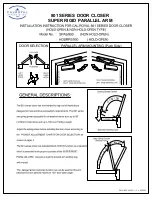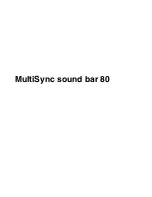
CUTMASTER 42
GENERAL INFORMATION 1-2 Manual 0-5141
• Provide a fire watch when working in an area where fire hazards
may exist.
• Hydrogen gas may be formed and trapped under aluminum
workpieces when they are cut underwater or while using a water
table. DO NOT cut aluminum alloys underwater or on a water
table unless the hydrogen gas can be eliminated or dissipated.
Trapped hydrogen gas that is ignited will cause an explosion.
NOISE
Noise can cause permanent hearing loss. Plasma arc processes can
cause noise levels to exceed safe limits. You must protect your ears
from loud noise to prevent permanent loss of hearing.
• To protect your hearing from loud noise, wear protective ear
plugs and/or ear muffs. Protect others in the workplace.
• Noise levels should be measured to be sure the decibels (sound)
do not exceed safe levels.
• For information on how to test for noise, see item 1 in Subsec
-
tion 1.03, Publications, in this manual.
LEAD WARNING
This product contains chemicals, including lead, or otherwise
produces chemicals known to the State of California to cause
cancer, birth defects and other reproductive harm. Wash hands
after handling. (California Health & Safety Code § 25249.5 et seq.)
PLASMA ARC RAYS
Plasma Arc Rays can injure your eyes and burn your skin. The plasma
arc process produces very bright ultra violet and infrared light. These
arc rays will damage your eyes and burn your skin if you are not
properly protected.
• To protect your eyes, always wear a welding helmet or shield.
Also always wear safety glasses with side shields, goggles or
other protective eye wear.
• Wear welding gloves and suitable clothing to protect your skin
from the arc rays and sparks.
• Keep helmet and safety glasses in good condition. Replace
lenses when cracked, chipped or dirty.
• Protect others in the work area from the arc rays. Use protective
booths, screens or shields.
• Use the shade of lens as suggested in the following chart.
NOTE
These values apply where the actual arc is clearly
seen. Experience has shown that lighter filters may
be used when the arc is hidden by the workpiece.
AWS F2.2:2001 (R2010), Adapted with permission of the American Welding Society (AWS), Miami, Florida
Guide for Shade Numbers
(from AWS F2.2, Lens Shade Selector)
Shade numbers are given as a guide only and may be varied to suit individual needs.
Process
Electrode Size in. (mm)
Arc Current
(Amperes)
Minimum
Protective
Shade
Suggested*
Shade No.
(Comfort)
Shielded Metal Arc Welding (SMAW)
Less than 3/32 (2.4)
3/32-5/32 (2.4-4.0)
5/32-1/4 (4.0-6.4)
More than 1/4 (6.4)
Less than 60
60-160
160-250
250-550
7
8
10
11
-
10
12
14
Gas Metal Arc Weding (GMAW) and
Flux Cored Arc Welding (FCAW)
Less than 60
60-160
160-250
250-550
7
10
10
10
-
11
12
14
Gas Tungsten arc Welding (GTAW)
Less than 50
50-150
150-500
8
8
10
10
12
14
Air Carbon Arc Cutting (CAC-A)
(Light)
(Heavy)
Less than 500
500-1000
10
11
12
14
Plasma Arc Welding (PAW)
Less than 20
20-100
100-400
400-800
6
8
10
11
6 to 8
10
12
14
Plasma Arc Cutting (PAC)
Less than 20
20-40
40-60
60-80
80-300
300-400
400-800
4
5
6
8
8
9
10
4
5
6
8
9
12
14
* As a rule of thumb, start with a shade that is too dark to see the weld zone. Then go to a lighter shade
which gives sufficient view of the weld zone without going below the minimum. In oxyfuel gas welding,
cutting, or brazing where the torch and/or the flux produces a high yellow light, it is desirable to use a
filter lens that absorbs the yellow or soduim line of the visible light spectrum.
Table 1-1
Содержание 42 CUTMASTER
Страница 4: ...TABLE OF CONTENTS...
Страница 24: ...This page left blank intentionally...
Страница 38: ...This page left blank intentionally...
Страница 44: ...Notes...
Страница 45: ...This Page Intentionally Blank...









































